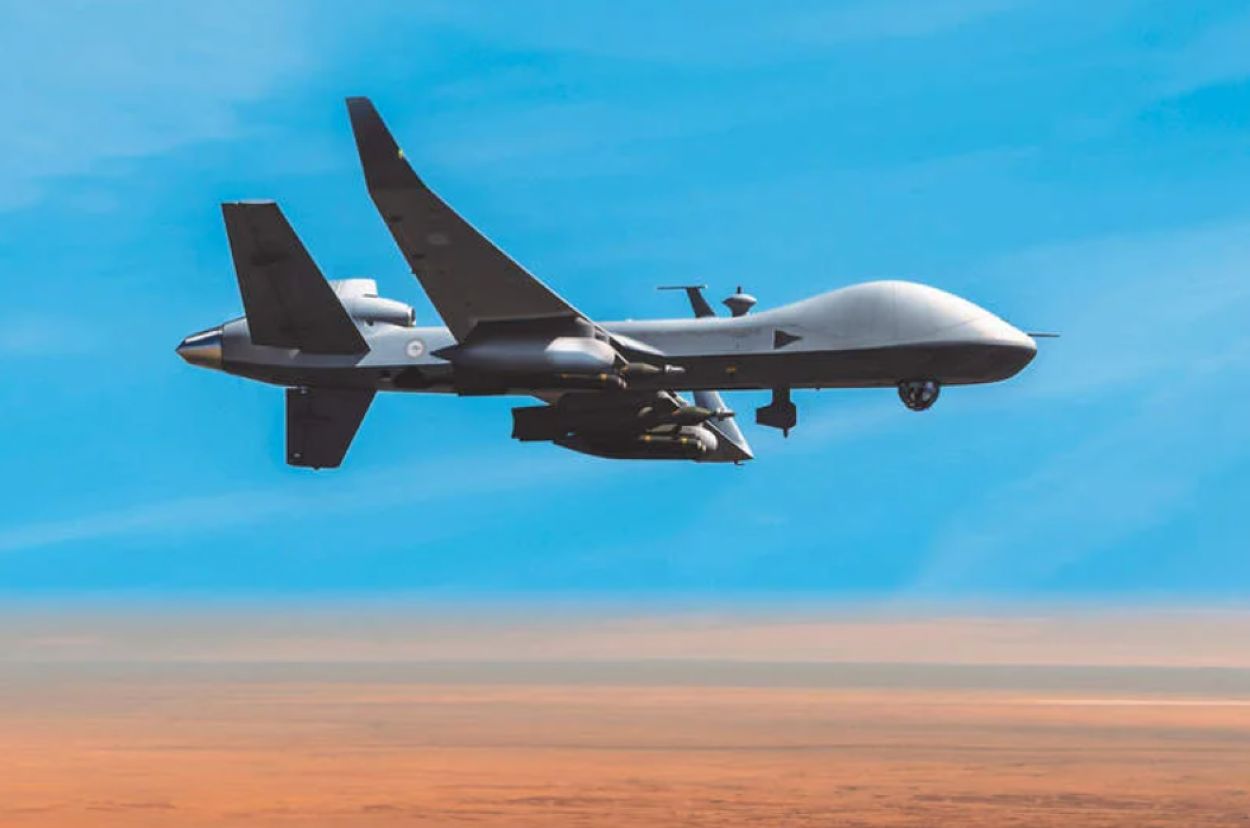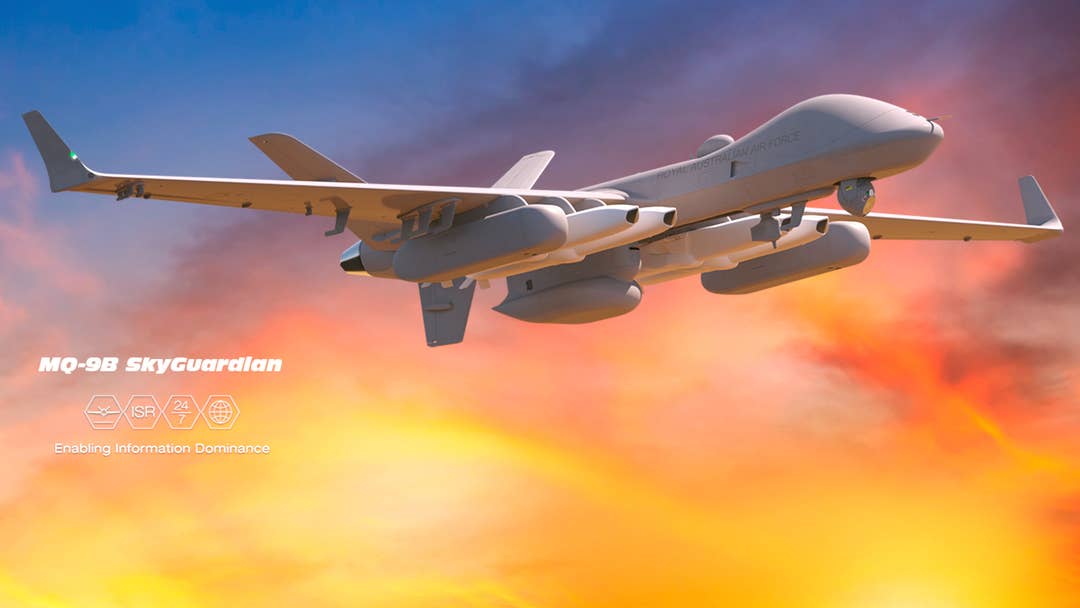According to the Times of India, the Indian MoD, on June 15, 2023, approved the acquisition of 31 weaponized Predator or MQ-9B SeaGuardian drones from the US. A formal announcement is expected during PM Narendra Modi’s visit to Washington next week.
Russia Deploys ‘Military Dolphins’ To Thwart Ukrainian Undersea Saboteurs Targeting Sevastopol
The deal is estimated to be worth $3.5 billion. Procurement will be made under the FMS (foreign military sales) program of the US government. Of the 31 drones to be procured, 15 would go to the Navy and 8 each to the Army and IAF.
“The deal will involve setting up MRO (maintenance, repair, and overhaul) facilities in India,” a source told the ToI.
Chequered Procurement History
India’s decision to procure the MQ-9B drones from the US has a very interesting history.
In June 2016, India joined the Missile Technology Control Regime (MTCR) and became eligible to procure long-range drones such as the MQ-9B.
India’s admission into the MTCR was facilitated by the US. Almost immediately after joining the MTCR, most likely as a quid-pro-quo, India sent a letter of request to the US Government for 22 MQ-9B Guardian Predator aircraft manufactured by GA-ASI, America’s top drone manufacturer.
In July 2016, GA-ASI announced that it would open an office in India.
PTI reported on June 22, 2017, that the US has cleared the sale of 22 unmanned Guardian drones to India at a cost of more than $2 billion. The deal has been approved by the US State Department and has been communicated to General Atomics.
Subhash Bhamre, India’s Minister of State for Defense, informed the Parliament on December 20, 2017, “Procurement of Predator ‘B’ Sea Guardian is being progressed under Buy (Global) category, and no transfer of technology is envisaged.”
In July 2018, during the Farnborough Air Show, a senior U.S. official and an industry source told Reuters that the US has offered India the armed version of Guardian drones that were originally authorized for sale as unarmed for surveillance purposes.
The US is also ready to sell more than the 22 drones that India was negotiating for.
The official added that for the sale to go through, India would need to sign on to a communications framework.
The United States and India signed the Communications Compatibility and Security Agreement (COMCASA) on September 6, 2018, during the inaugural “2+2” dialogue between the defense and foreign ministers of both countries.
COMCASA facilitates the interoperability of communication systems and enables secure and encrypted communication between the armed forces of India and the United States.
Subsequently, the three Indian services worked out their individual requirements for the number of drones and the onboard equipment required for their variant of the drone. It was decided that 30 drones would be procured. Several rounds of negotiations were held with the US government and industry officials, but the procurement appeared to languish.

Indian Armed Forces Have Doubts
In July 2019, the Hindustan Times reported that the Indian Armed Forces were rethinking procurement of the drones due to high costs and more urgent priorities.
Sources told HT that the IAF has internally raised questions about an armed drone surviving in contested airspace like the one over Pakistan-Occupied Kashmir (POK) or along the Line of Actual Control (LAC), with both potential adversaries equipped with top-of-the-line surface-to-air missile (SAM) systems.
“The other significant reason behind the Indian rethink is the prohibitive price of armed drones like the Predator-B. According to the military establishment, the cost of a bare drone platform will be to the tune of $100 million, and a full complement of weapons like laser-guided bombs or hell-fire missiles will cost another $100 million,” said a senior South Block official.
“Under the circumstances, the IAF will give preference to acquiring more multi-role fighters with long-range air-to-air missiles, and the Indian army will be looking towards replacing its dated T-72 tanks. The Indian navy needs more surface combatants at sea rather than an armed drone for projecting itself as an Indo-Pacific power.”
On October 29, 2020, the US News reported that during the 2+2 Ministerial dialog between India and the US in October 2020, the US reportedly pressured India into buying MQ-9B drones, but India declined.
Multiple current officials speaking on the condition of anonymity told the US News that the Reaper sale was at the top of the agenda for Secretary of State Mike Pompeo and Secretary of Defense Mark Esper.
Lease of MQ-9B Drones
The ToI reported on November 25, 2020, that India has inducted two MQ-9B Sea Guardian drones for surveillance missions after acquiring them on a one-year lease from the US firm General Atomics. The lease can be extended for another year.
The three services did eventually finalize a case for the procurement of 30 drones. The Hindu reported on March 9, 2021, that the procurement of 30 armed drones from the U.S. is likely to be taken by the Defence Acquisition Council (DAC) in April for approval.
“All the procedures have been completed, and the deals are likely to be taken up at the next meeting of the DAC for approval,” the official said. “There is no DAC in March, the next one is scheduled in April.”
Analysis
The imperatives for the procurement of MQ-9B predator drones are best known to the MoD. However, the high cost of the procurement and circumstantial evidence that the services themselves have had doubts about the procurement are cause for concern.
How many times have we heard top-ranking IAF officials publicly lament the relentless drop in the number of operational fighters squadrons? And how many times have we heard them lament the non-availability of long-endurance strike drones?
No service chief has publicly articulated the requirement for the MQ-9B drones.
It should be noted that the IAF could not acquire 2 of the 5 squadrons of the S-400 air defense system that it had contracted for because India has not been able to pay Russia for the procurement. Yet, MoD is all set to spend $3.5 billion on procuring armed drones.

Combat Potential of Armed Drones
The MQ-9B does not address any threat faced by India. Our adversaries are confronting us along land borders, not across the seas.
Armed drones are suited to low-intensity, asymmetric conflicts where an adversary lacks air defense capability. A conflict with China or Pakistan will neither be low intensity nor asymmetric.
China has very capable air defense systems, including integrated air defense systems (IADS) at par with the S-400, which will make Predator operations unviable.
If the aim is to deter adversary adventurism, would it not be better to spend money on stepping up production of indigenously developed tactical ballistic missiles such as Pralay, cruise missiles such as the ITCM; to increase manufacturing capabilities for Brahmos, affordable and expendable reconnaissance drones, kamikaze drones and FPV strike drones.
Finally, to develop a networking system that minimizes the sensor-to-shooter time when using drones, both NATO and Russia have developed and deployed such integrated communication and command systems in Ukraine.
Should India Become A US Proxy Against China?
It’s important to realize that the US will have access to all the data that Indian MQ-9Bs gather flying along the LAC. Would that not make India a US proxy in China’s perception?
Would such a perception deter China from attacking India? Could it not provoke China instead? A strong, self-assured nation deters, it doesn’t provoke.
The reconnaissance capability of the MQ-9B is formidable, but India’s requirements could be met through its existing fleet of Searcher and Heron drones, besides P-8Is. With time our own drones will add to the capability.
China enjoys a huge advantage in domestically produced armed drones and their weapons. India must seek to close the gap as quickly as possible, not through the procurement of MQ-9B drones but through a massive boost in private and public sector investments into drone-related technology.
Our conflicts with Pakistan & China are territorial. The outcome of any territorial conflict is determined by the loss or gain of territory. Armed drones have a very limited role to play when it comes to wresting territory.
Conclusion
One of the most significant lessons of the ongoing war in Ukraine is that long-endurance, high-altitude drones have little role to play in a peer-to-peer conflict.
In an earlier analysis, we covered how aerial warfare has acquired a new dimension – the Drone dimension. We referred to it as ‘New Age’ aerial warfare.
India’s decision to procure MQ-9B drones appears to be a surreal disconnect from reality. It appears to completely ignore not just the future trends in warfare but what is happening on battlefields today!
- Vijainder K Thakur is a retired IAF Jaguar pilot. He is also an author, software architect, entrepreneur, and military analyst. VIEWS PERSONAL
- Follow the author @vkthakur




